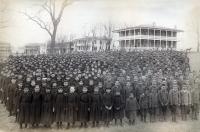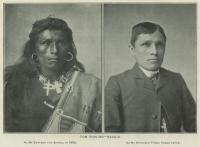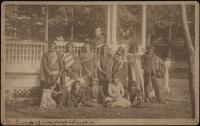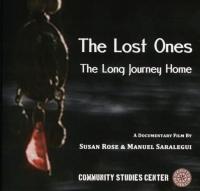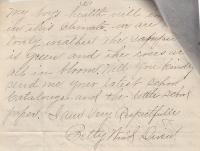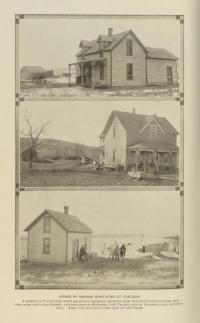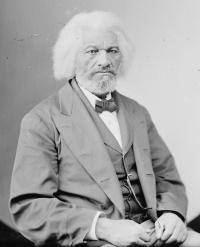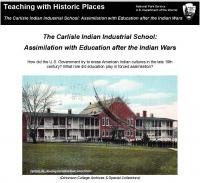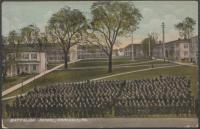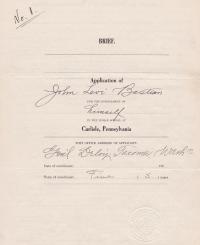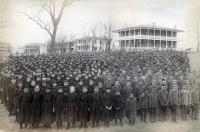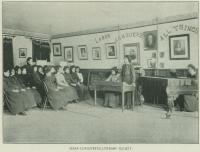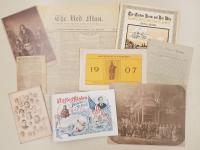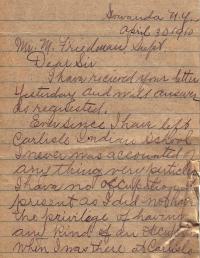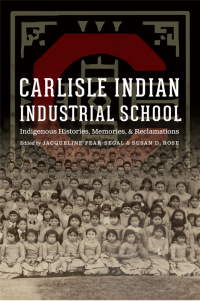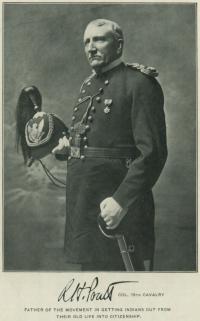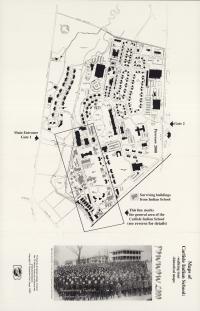The Carlisle Indian Industrial School (CIS) continues to be a major site of memory for many Native peoples across the U.S. and Canada, as well as a source of research and study for descendants, students and scholars around the globe. Tens of thousands of young people from Indian communities all across America were sent to the Carlisle Indian School in Pennsylvania between 1879-1918. What was the purpose, the strategy, the outcome? What can we learn from the historical record of this educational experiment about the goals of its founders, the students who were sent there, the impact on their families and communities, U.S. military and domestic policy related to Indian tribes, the history of American education, about race and ethnic relations? These teaching modules and lesson plans offer secondary and post-secondary school teachers some ideas of how to explore this history and the significant role it played in American and Native American history.
Browse Lesson Plans
Displaying 1 - 14 of 14
Tens of thousands of young people from Indian communities all across America were sent to the Carlisle Indian School in Pennsylvania between 1879-1918. What was the purpose, the strategy, the outcome? What can we learn from interrogating this historical, educational experiment about the goals of its founders, the students who were sent there, the impact on their families and communities, U.S.…
The goal of this exercise is to explore the Carlisle Indian School Digital Resource Center and what it has to offer. Much can be learned by searching through the primary documents, including student files and school publications – and also consulting secondary sources.
This assignment can be adapted for college or high school classes or community workshops.
Under the authority of the US federal government, Carlisle was the first federally funded off-reservation Indian boarding school. Founded in 1879 by Captain Richard Henry Pratt, the school enrolled nearly 7,800 students by the time of its closing in 1918. Pratt believed that American Indians were the equals of European-Americans, and that Native American children immersed in mainstream Euro-…
Comparing and Contrasting Arguments: Henry Ward Beecher, Sitting Bull, and Capt. Richard Henry Pratt
Captain Richard Henry Pratt, founder to the Carlisle Indian School, wanted to “civilize” and assimilate Indian children into Euro-American culture. Speaking to a convention of Baptist ministers in 1883, Pratt used the image of baptism to explain his philosophy for transforming Native children so they could be made to emulate white men and women.
They came from all over the country, from almost every nation. The Carlisle Indian Industrial School in Pennsylvania was the first federally funded off-reservation Indian boarding school founded in 1879 by Captain Richard Henry Pratt. Until its closing in 1918, over 10,500 children were sent to the school to become “civilized” and learn the white man’s ways and language.
Pratt believed…
This lesson introduces students to close reading of primary and secondary documents. The focus of this close reading module is also to introduce students to aspects of history that are complex, nuanced, and controversial, such that they will be able to understand the difficulties in making concrete or objective assessments about individual experience.
Documents and publications from the Carlisle Indian School offer insight into the involvement of the Bureau of Indian Affairs in other aspects of Indian life. The BIA was tasked with breaking up Indian lands and dividing them among Indian individuals and their families. The Dawes Act (The General Allotment Act) passed by Congress February 8, 1887, set a precedent for the legislation regulating…
This teaching module will utilize primary documents from individuals who attended the Carlisle Indian School to inform a conversation about the role of athletics in the lives of the students and the institution. Using close reading techniques and qualitative approaches, students will inquire into the significance of sports in student/Native identities, the mission of the school, and concepts…
Lesson Essential Question:
How do the views of July 4th compare/contrast between former slaves and Indians in the late 1800’s?
Learning Goals for the Lesson:
Understand that cultural backgrounds and experiences helped to shape the various ways minority groups in America viewed the “white man’s” celebrations.
Students Will…
Questions: How did the U.S. Government try to erase American Indian cultures in the late 19th century? What role did education play in forced assimilation?
Topics: This lesson could be used in middle and high school units relating to American Indian and Native American history, 19th century frontier history, American Indian culture, the history of…
"Piecing Together the Past: Finding Student Stories in the Carlisle Indian School Digital Resource Center" is designed as part of an 11th-12th grade course tracing American Indian history from the Precontact period until the present. It asks students to grapple with the question of the forms in which we preserve historical memory. In this lesson, each student will investigate the file of a…
Context: These activities will both be part of a longer unit of study around the historical experiences, contributions, and treatment of Native Americans in the Pacific Northwest. Preceding and between these activities will be lessons on the pre-European invasion culture and history of the region, PNW treaties, creation of the reservation system, Native American stereotypes…
This lesson plan asks students to explore gender at the Carlisle Indian Industrial School by closely examining ten primary sources, including photographs, newspaper articles, and correspondence.
Learning Outcomes (What will students know & be able to do as a result of this lesson?):
Students will be able to use primary sources to derive information from an image of historical significance, of how the historical image is comparable to a current image of the student.
Key Concepts & Essential Questions:
How does the model…
Browse Teaching Resources
Displaying 1 - 12 of 12
Thanks to a generous 2017-18 grant from the NHPRC, the Carlisle Indian School Digital Resource Center has developed a teaching kit for use in schools, libraries, and other educational institutions in the United States. The teaching kit is comprised of 35 full color facsimile reproductions of a variety of photographs, newspapers, and…
This resource is an excerpt from the “Introduction” to Carlisle Indian School: Indigenous Histories, Memories and Reclamations, co-edited by J. Fear-Segal and S. Rose, University of Nebraska Press, 2016.
This resource includes the full text from Captain Richard Henry Pratt's speech in which he used the now well-known phrase to describe his philosophy of assimilation: "Kill the Indian in him, and save the man." The speech was delivered in 1892 during the National Conference of Charities and Correction, held in Denver. Colorado. The full text copy of his speech as printed in the published…
This map shows the locations of off-reservation Indian Boarding Schools throughout the United States, numbered in the order in which each began operations under government auspices. These 27 schools were fully managed and directed by the Bureau of Indian Affairs. (There were more than 300 other schools, located both on and off reservations, many of which were managed by the Bureau, but some of…
Map of the Carlisle Indian School showing the school at its foundation in 1879 and closure in 1918 and the remianing buildings at what is now the Army War College in 2000. (This resource is provided courtesy of Dr. Jacqueline Fear-Segal.)
Dickinson College faculty and students compiled this selective bibliography of primary and secondary sources about the Carlisle Indian Industrial School.
The attached documents are Teaching Standards for the Carlisle Indian School Digital Resource Center.
The Library of Congress and National Archives provide these resources which includes a teacher's guide and worksheet for analyzing photographs and prints. The resource will aid students in interacting with the docments and teaching resources on the Carlisle Indian School Digital Resource Center.
This recource includes a teacher's guide for primary source analysis and a primary source analysis tool (from the Library of Congress). It is meant as an aid to the Carlisle Indian School Digital Resource Center teaching resources.
The Education Staff of the National Archives and Records Administration developed document analysis worksheets for different types of material, including written documents, photographs, cartoons, posters, maps, artifacts, motion pictures, and sound recordings.
These resources will aid students in interacting with the documents and teaching resources on the Carlisle Indian School Digital…
The Library of Congress provides teacher's guides and analysis tools for a variety of different materials. These guides will aid students in interacting with the documents and resources on the Carlisle Indian School Digital Resource Center. Included are guides for analyzing primary sources, analyzing political cartoons, analyzing books and other printed texts, analyzing newspapers…

